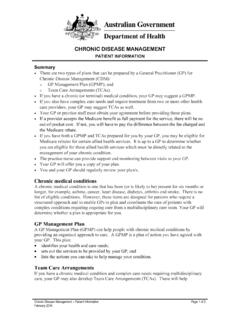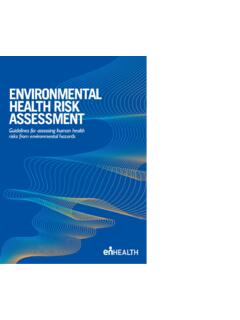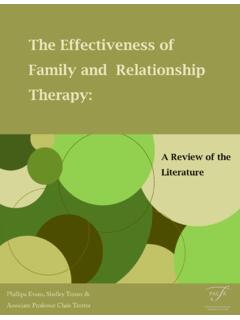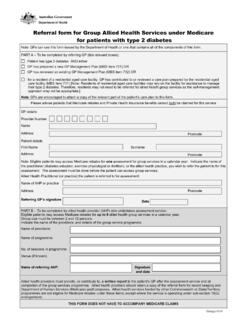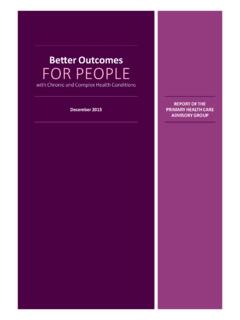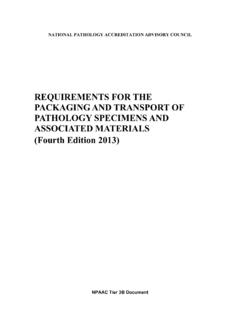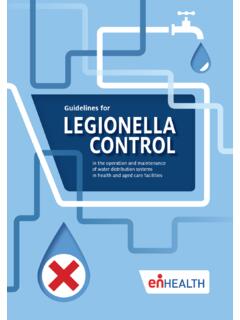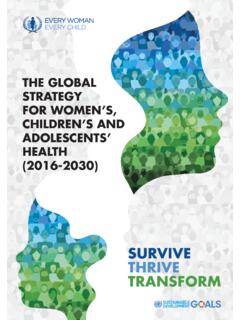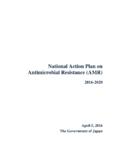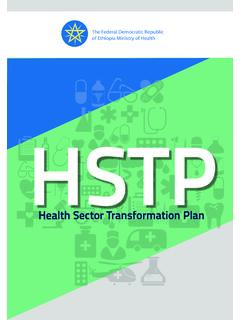Transcription of AUSTRALIA’S NATIONAL ACTION PLAN FOR HEALTH …
1 australia S NATIONAL ACTION PLANFOR HEALTH SECURITY2019-2023 The Australian Government Department of HEALTH in collaboration with the Department of Agriculture and Water Resources, state and territory governments and other partnersImplementation of the recommendations from the Joint External Evaluation of IHR Core CapacitiesDECEMBER 2018 Page 2 of 33 Table of Contents 1 Foreword .. 3 2 Acknowledgement .. 4 3 Executive Summary .. 4 4 Introduction .. 5 5 NAPHS Background / Context .. 5 The International HEALTH Regulations (2005) .. 6 International HEALTH Regulations Monitoring and Evaluation Framework.
2 6 australia s Joint External Evaluation .. 7 6 NAPHS Vision, Mission and 8 7 Methodology for the Development of the NAPHS .. 9 8 Major Components of the NAPHS .. 10 9 Delivery of the NAPHS .. 10 10 Appendix: Planning Matrix .. 12 NATIONAL Legislation, Policy and Financing .. 12 IHR Coordination, Communication and Advocacy .. 13 Antimicrobial Resistance (AMR) .. 14 Zoonotic Diseases .. 15 Food Safety .. 16 Biosafety and Biosecurity .. 17 Immunisation .. 18 NATIONAL Laboratory System .. 19 Real Time Surveillance .. 20 Reporting .. 21 Workforce Development.
3 22 Preparedness .. 23 Emergency Response Operations .. 24 Link Public HEALTH and security Authorities .. 25 Medical Countermeasures and Personnel Deployment .. 26 Risk Communication .. 27 Points of Entry .. 28 Chemical Events .. 29 Radiation Emergencies .. 30 Acronym List .. 31 Page 3 of 33 1 Foreword In today s global community, all countries are susceptible to infectious diseases and a wide range of other public HEALTH risks. Public HEALTH threats are inevitable and our first line of defence against them is a strong HEALTH security capacity.
4 The majority of emerging epidemics are zoonoses, that is, infectious diseases that spread between animals and people. Antimicrobial resistance also presents an ongoing challenge for both human and animal HEALTH . These threats need to be tackled with a One HEALTH approach that combines the expertise within human, animal and environmental HEALTH for a multidisciplinary response. This document, australia s NATIONAL ACTION plan for HEALTH security (NAPHS), represents a commitment to take ACTION to strengthen our defences against acute public HEALTH threats.
5 It was developed in response to the recommendations from australia s Joint External Evaluation (JEE) of the implementation of the International HEALTH Regulations (2005) (IHR) conducted from 24 November to 1 December 2017. The WHO-led international team of experts that assessed our country s capabilities took a great amount of time and careful consideration to supply us with suitable recommendations to further strengthen our already strong capacities. These recommendations are now prioritised for ACTION across the five year time period of the NAPHS.
6 The Department of HEALTH ( HEALTH ) will oversee implementation of the NAPHS, but it is important to note that the plan is not only a responsibility of the HEALTH sector. Realisation of the NAPHS depends on partnerships extending to many other sectors, including organisations involved in food safety, agriculture, chemical and radiation safety, security and border agencies. All levels of government, private organisations and research institutions, and the general community have a part to play in the NAPHS. Given the dual responsibility for many priorities, HEALTH and the Department of Agriculture and Water Resources (Agriculture) will partner in overseeing the governance and delivery of the NAPHS.
7 It is critical that australia s high standards of HEALTH security are maintained. Diseases can spread faster and more unpredictably than ever before due to our increasingly interconnected world. New pathogens, rapid epidemics, misuse of harmful biological substances and antimicrobial resistance all demand agile and sophisticated systems and measures of prevention, preparedness, detection and response. It will be important to build on the momentum of cross-sectoral dialogue and dedication seen in the JEE. Maintaining connections to our international partners, including the WHO and the World Organisation for Animal HEALTH and our fellow Member States, is also central to strengthening global HEALTH security .
8 It is in the best interests of the global community, and a moral imperative, to build the capacities of other countries to respond to public HEALTH threats. We are confident that this NAPHS provides a solid framework for the coordination of efforts to continue to improve australia s already robust capacities to prevent, prepare for, detect and respond to public HEALTH threats. Professor Brendan Murphy Dr Mark Schipp Chief Medical Officer Chief Veterinary Officer Page 4 of 33 2 Acknowledgement The efforts and dedication of a multitude of people and organisations made the Joint External Evaluation (JEE) of australia s IHR implementation in 2017 a highly valuable and constructive exercise.
9 The recommendations from the JEE ultimately formed the basis of australia s NATIONAL ACTION plan for HEALTH security (NAPHS). The contributions of all those involved in the JEE and NAPHS processes are greatly appreciated: The staff within the Australian Government. State and territory governments and the expert committees and organisations across australia . The following WHO entities: the JEE Secretariat of the WHO, WHO HEALTH Emergencies Programme, the Western Pacific Regional Office and the Country HEALTH Emergency Preparedness and IHR Department at WHO Headquarters.
10 The governments of Canada, China, Finland, Japan, New Zealand and the United States of America for providing technical experts to australia s JEE. The Food and Agriculture Organization of the United Nations (FAO), the World Organisation for Animal HEALTH (OIE) for their contribution of experts and expertise to australia s JEE. 3 Executive Summary australia completed a JEE of IHR implementation in 2017. australia was the sixth Member State in the WHO Western Pacific Region and the first country in the Pacific to undertake a JEE.
